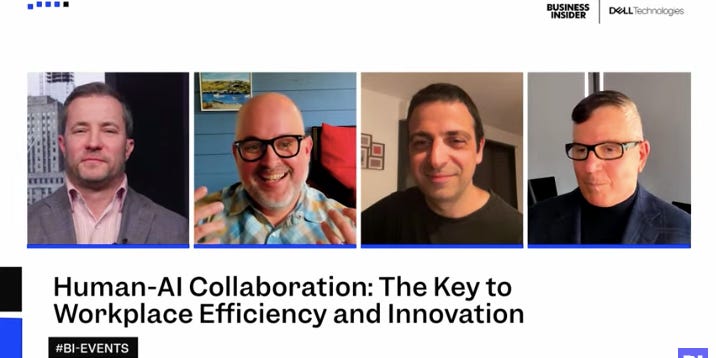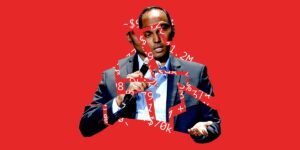- The wide-ranging potential of AI could dramatically change the way workplaces operate.
- Three experts told Business Insider that properly trained and integrated AI could improve its efficacy.
- The discussion was part of BI’s event “Human-AI Collaboration: The Key to Workplace Efficiency and Innovation,” presented by Dell Technologies and held on April 23.
- Click here to watch a recording of the full event.
Artificial intelligence has become a centerpiece of conversation in almost every industry. As the new technology accelerates in skill and ubiquity, business leaders are racing to figure out what the relationship between workers and AI will look like in years to come.
Business Insider’s virtual event “Human-AI Collaboration: The Key to Workplace Efficiency and Innovation,” presented by Dell Technologies, brought together a panel of experts to discuss the trials, triumphs, and future of AI.
“This technology has the opportunity to reinvent how we interact with the digital world,” said Matt Baker, the senior vice president of AI enablement at Dell Technologies. He discussed the major ways in which Dell is integrating AI into its processes, from increasing productivity for developers to automating content.
He was joined by Dr. Mozziyar Etemadi, the medical director of advanced technologies at Northwestern Medicine, who has seen AI bring major changes to the rigid systems of medicine. “One underappreciated aspect of creating AIs, which you deal with every day when you’re doing it, is deep integration with the legacy systems that produce the data.”
This approach is similar to the issues faced by fellow panelist Peter Miscovich, the global consulting practice lead, future of work for JLL. “As we look at the real estate lifecycle, we’re really looking to reinvent the entire lifecycle,” he said. “There are so many latent processes, and if you will, legacy systems and buildings are physical. They don’t change that quickly, and they certainly don’t change overnight.”
The conversation, moderated by BI’s future-of-work correspondent Tim Paradis, tackled some of the biggest concerns regarding AI’s integration into the workforce. Baker said he supported the idea that people must be “technological optimists” when approaching AI.
“The history of technology innovation is not one of displacing humans and reducing employment,” he said. “It is of improving the human condition, broadening the economy, and improving our lives overall.”
The expansion of AI also presents opportunities for a new field of occupations within changing industries. “There are predictions that we could have two times, three times, even four times the employment demand for new job growth as a result of gen-AI and AI ethicists, AI translators, AI mediators, AI co-creative, AI legal, and compliance experts,” Miscovich said.
Artificial intelligence can only be as useful as its design allows. All three panelists expressed the importance of education initiatives across all industries and workers to learn how to use AI and evaluate how it can best be integrated into existing processes. Baker described this approach as “smart architecture”: an initiative of reinvention that builds better systems from the ground up with a human-centered approach.
Etemadi said he hopes well-designed AI will make people feel “empowered” to use the technology more. “They’ll give you more feedback early on, which leads to more change management and more positive feedback,” he added.
The panelists discussed how past innovations like the big data age and social media could teach us lessons about how to better work with AI. Working with AI from the ground floor can allow businesses to design the parameters that will guide AI’s future presence in the workplace.
“We really need to think through how this is going to impact our society and all facets of our society and those ethics and those outcomes,” said Miscovich. That modeling, he added, will be “so critical to our future success with artificial intelligence.”
Artificial intelligence could become a game changer for almost every industry. But exciting opportunities require an eager approach. “You determine what models to use, you determine what the application looks like, you control your destiny,” said Baker. “So don’t be a consumer, be a practitioner.”





